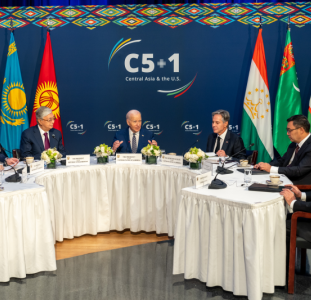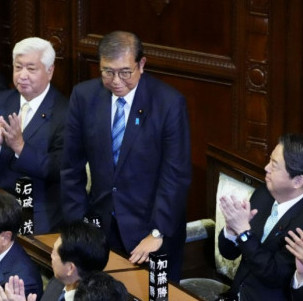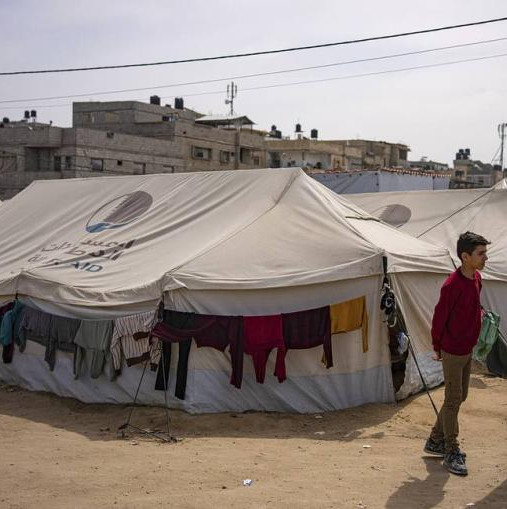Last week there were talks between Russian President, Vladimir Putin, and former Prime Minister of Japan, Yoshiro Mori, who arrived by instruction of the country's government. In the course of the talks the sides again discussed the Kuril Islands belonging. Meanwhile, Japan does not require the vacation of all the Kuril island chain, but only four (or even three) of the southern. As a result of negotiations, each party predictably remained unconvinced.
The Russian President proposed to jointly develop the economy and infrastructure of the islands, but the other side did not agree. The Japanese press immediately criticized the outcome of the talks, and authors of critical articles denounced the Soviet Union and Russia for the "illegal" possession of the islands, violation of international law, confinement of Japanese prisoners in Siberian camps, etc. In short, give the islands, full stop! Japan's main arguments - the absence of the Soviet signature under the peace treaty concluded in San Francisco in 1951, the occupation of these islands, on which, they say, there were not even the Japanese forces.
As you know, Japan has demanded their return for 60 years, referring to the "theory" the U.S.A invented about the four disputed islands - Habomai, Shikotan, Urup and Iturup. According to this "theory", Shikotan and Habomai islands allegedly belong to the system of Hokkaido, and the notion of the Kuril Islands allegedly does not cover the "special geographical unit" – "Southern Kuril Islands" (with a capital "S") - Kunashir and Iturup. This "innovation" was invented in the mid 50's and since then has been imposed upon the international community. The only thing is that both the American Peoples Encyclopedia (1951, v. 16, p. 559), and world-renowned Encyclopedia Britannica (1964, v.13 p. 523), and others for some reason start the list of the Kuril Islands chain just from Kunashir, Shikotan and Iturup.
We are not going to list the history of these islands' and Sakhalin's belonging from Russian navigators' trips in XVIII century to our days. At different times, for different reasons, they passed from hand to hand. Currently, the Kuril Islands belong to Russia following the results of the Second World War. By the beginning of the war, Japan owned all the Kuril Islands, the southern half of the Sakhalin Island and a non-aggression treaty with the USSR.
Restoration of the USSR's rights to the Kuril Islands was provided by the Agreement of the three great powers on the Far East, adopted at the Yalta Conference by Great Britain, the Soviet Union and the United States in February 1945. On April 5, 1945, the Soviet Union denounced the non-aggression treaty with Japan.
At the Potsdam Conference, the Soviet Union undertook to launch hostilities against Japan 3-4 months after the end of war in Europe. On July 26, 1945 within the conference, the governments of Great Britain, the U.S. and China in a joint declaration demanded the unconditional surrender of Japan in World War II with the threat of further bombings in case of refusal, and formulated the basic principles of peaceful settlement. On July 28, the Japanese government rejected the Potsdam Declaration Requirements.
On August 8, 1945, a representative of the Soviet Union announced to the Ambassador of Japan the joining the Potsdam Declaration, and declared war to Japan. On the night of August 9, the Soviet troops began hostilities.
On September 2, 1945 Japan signed the act of unconditional surrender. The act was signed by the Japanese, American, British and Soviet sides, officially authorized persons. And also separately – by an official common representative of all the Allied powers, taken together, including the USSR. Signing the unconditional surrender, Japan agreed to the terms of the Potsdam Declaration, stating: "Japanese sovereignty shall be limited to the islands of Honshu, Hokkaido, Kyushu, Shikoku and such minor islands as we determine".
In 1946, Memorandum 677 just specifies the Japanese government the islands the sovereignty of Japan is limited to. Paragraph 3, subparagraph B clearly specifies the Japanese that "the Kuril (Chishima) islands are no longer part of their territory". It should be noted that there is no division into "northern" and "not northern" territories. Japan did not protest. Four days later a decree on the inclusion of Sakhalin and the Kuril Islands to the USSR was signed.
It should be noted that according to military experts, in August 1945, the Japanese armed forces numbered 7,000,000 servicemen, 10 thousand aircraft, and 500 warships. The U.S. and its allies had in the Asia-Pacific region about 1.8 million people, five thousand aircraft. If the USSR had not entered the war, the Japanese Kwantung Army forces deployed in China and Manchuria could be used against the U.S. and its allies. In this case, as was believed by the U.S. leaders, the war, after the occupation of Japan, could have dragged for another two years and cost the Allies 1 million lives more.
The Kwantung Army had about 1.1 million military personnel, as well as a large number of gendarme and police units. During combat operations with it, the Red Army lost 12 thousand people killed and 24 thousand wounded, the Japanese irrecoverable losses were about 84 thousand; 600 thousand were taken prisoner.
From 11 to 25 August, the Red Army liberated South Sakhalin captured by the Japanese in 1905, where there were about 30 thousand Japanese soldiers. The fighting in the Kuril Islands ended on September 1. The islands were equipped with positions where about 80 thousand Japanese soldiers stationed. Some of them were killed in the fighting, and the rest were taken prisoner.
Now the Japanese claim there were no troops on the disputed islands but in fact:
- Urup – the 129th Mixed Brigade;
- Iturup, Kunashir and the Lesser Kuril Ridge – the 91st Infantry Division forces.
Japanese commentators criticize the Soviet Union to have sent the prisoners to Siberia, where they were forced to work. You must admit that it is very expensive to feed for nothing more than 600 thousand healthy men, as well as to transport them to the Crimea. With regard to international law, for some reason the Japanese press does not mention those Soviet transport ships that carried to the U.S. strategic materials and equipment, but were sunk by unknown submarines. Why not remember the infamous detachment 730 - a secret military unit, in which Japanese virologists worked. They developed biological weapons and tested experimental batches in Chinese and Russian prisoners of war. After all, border skirmishes continued since 1939, and in them the Red Army soldiers were not only killed, but captured too. Japanese have no right to reproach Russia for anything.
In 1920-1925 Japan occupied North Sakhalin too. When Soviet diplomats reminded the Japanese that all these actions are contrary to the agreement of 1875, they answered: "War cancels all treaties. You were defeated, so let’s start from the current situation."
According to the author, the Japanese ought to be reminded of their words so that they may start from the current situation and not to accuse Russia of owning the islands illegally. It is time to calm down, stop spending days of mourning for the lost "Northern Territories", criticizing the Japanese willing to cooperate with us (there are these too but they are few), and co-exist peacefully with Russia.









